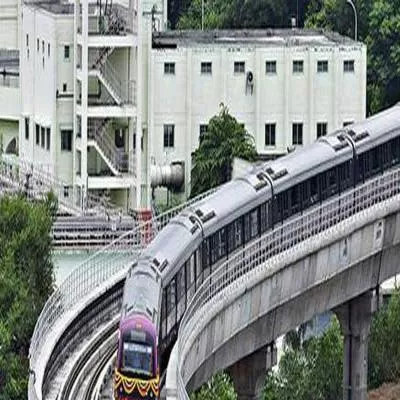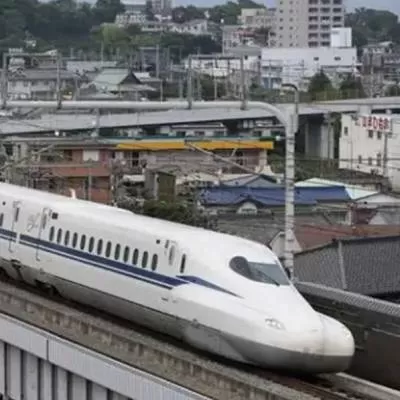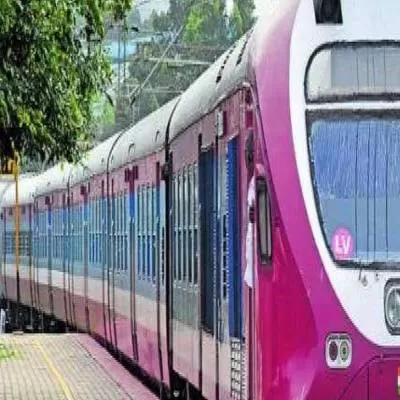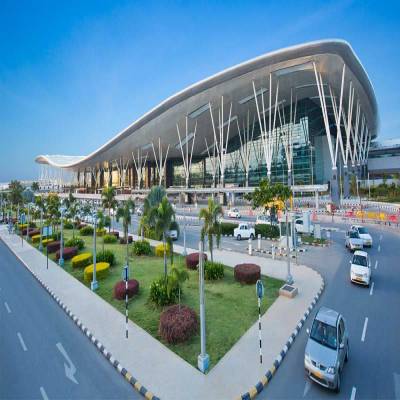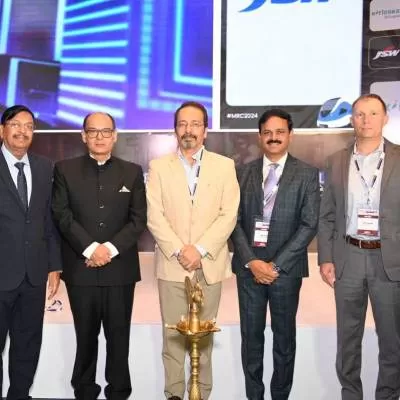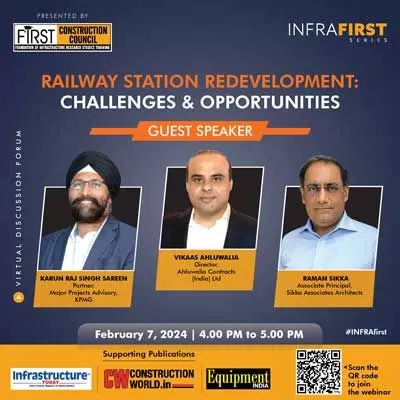
Our Metro
India´s IT city Bengaluru saw the underground corridor of Phase-I of its Namma Metro (´Our Metro´ in Kannada) inaugurated in April this year.
Covering the city
The total coverage of Phase-I with two corridors is 42.3 km in length; the East-West corridor is 18.1 km and the North-South corridor is 24.2 km, with 42 stations, of which seven are underground. The underground section on both corridors is 8.8 km in length. The 4.8-km underground stretch from Cubbon Park to City Railway Station was commissioned this April, which completes the East-West corridor, also called Purple Line. This journey takes merely 40 minutes as against almost two hours by road.
With the opening of the East-West corridor, a total of 28 km of Phase-I has become operational. On the North-South line, the metro is currently operational in a 10-km stretch in north Bengaluru from Peenya to Swastik Circle. Prior to opening the East-West line, 6.7 km in east Bengaluru had been operational on the East-West line.
And now, Bengaluru has its eyes set on the inauguration of the entire 24.2-km North-South corridor, scheduled for November; this will mark the completion of the entire 42.3-km Phase-I. Further, Phase-II will connect the outskirts; this is expected to be covered by 2020.
The plan
The much-awaited East-West corridor or Purple Line comprises a 5.12-km underground section that makes the Bangalore Metro the first in South India with an operational underground section.
The underground metro features massive stations, escalators, air-conditioning and Wi-Fi. Siddanagouda Hegaraddi, Chief Engineer-Underground, Bangalore Metro Rail Corporation (BMRC), shares, ´The planning of the stations has been done to keep entrance passageways short and direct with a minimum number of bends; no conflict of movement for incoming and outgoing passengers; minimal columns and obstructions; the requisite number and size of escalators and staircases to ensure minimum walking distance; adequate width of platform; toilets; lifts; ramps; and Braille paths.´
Construction techniques
Several technologies were used in construction. There is a pile foundation (end-bearing piles and friction piles) and in viaducts, precast segmental simply supported single box girder with post-tensioning and pre-stressed girder with deck slab for stations, precast box girder with single cell for supporting two tracks with inclined webs, and rib finishes from ground level till the start of flare for pier cap provided. A standard gauge of 1,435 mm has been adopted; further, the gradient of the superstructure is variable with a maximum up to 4 per cent. The horizontal alignment of the superstructure comprises straight, transition and curved stretches. The minimum design radius of the curvature is 120 m for the main line; the centre to centre of the track is 4.2 m in Phase-I and varies from 4 m and 4.2 m in Phase-II. The centre to centre track in scissors crossover is 4.5 m for 1:7 and 4.98 m for 1:9; loading corresponding to Modern Rolling Stock (MRS); ballastless track - a rebar provision for track concrete plinth integrated with deck slab. Also, regenerating Type-2 rolling stock is being used. And, the project proposes to use solar energy at depots and LED lights to save energy.
Further, high-quality materials for construction have been used as per the relevant IS code specifications. As Hegaraddi shares, ´The rails used in turnouts are of 1,080-grade head hardened (imported) to resist wear and tear. The rolling stock was imported from South Korea and assembled at the BEML factory. The coaches are lightweight; made of stainless steel with automatic doors, they are aesthetically superior.´
Equipment used during construction includes tunnel boring machines (TBM); slurry and EPB shield; concrete pumps and boom placers; batching plants for concrete of capacity 100 cu m per hour; launching girders for erection of segments; hydraulic rigs; winches; concrete transit mixers; dumpers; trailer, trucks and tractors; vibro rollers; cranes; gantry cranes; front loaders; excavators; road rollers; asphalt mixing plant; and bitumen pavers.
Value-adds
Safety aspects include the continuous automatic train protection (ATP) and automatic train operation (ATO) system and fire-retardant materials with low fire load, low heat release rate, low smoke and toxicity inside. There are emergency doors at both ends and inter-car couplers to reduce injury in case of accidents. Further, lifts, ramps and tack tiles have been provided at all stations for senior citizens and the physically challenged.
What´s more, the project has decided to plant 10 trees for every tree cut - 15,000 saplings have already been planted. Environmental monitoring studies are being carried out for air quality and noise and studies on vibration effect on heritage structure and groundwater recharge have been carried out.
The challenges
The project has acquired land through the Karnataka Industrial Area Development Board (KIADB) under the provisions of KIAD Act 1966. ´Fortunately, land acquisition for Phase-I was smooth as there is a provision for consent award,´ says Hegaraddi. ´Also, 99 per cent of landowners have received compensation through consent. This has reduced litigation.´
Still, BMRC had its share of challenges. Tunnelling operations have been hard owing to difficult strata and working under a thickly populated area. Frequent damages occur to cutters in the TBM owing to changes in rock strata. And limited period for movement of trucks, trailers and transit concrete mixers forced the team to carry out work at night. Enormous care was required during construction, particularly when launching girders at heights of 15-20 m. Other challenges included dismantling and demolition of buildings, which had to be carried out with maximum safety and modern equipment, shifting of utilities, traffic diversion, mitigating inconvenience to public, maintaining roads during construction, mitigating noise and dust, and safety.
Budget and timeframes
BMRC had envisaged building Phase-I in five years with an initial budget of Rs 8,158 crore. But the project has been delayed by four years, with an additional cost of nearly Rs 5,000 crore. The estimated completion cost of Phase-I is Rs 13,845 crore. The Central Government and Karnataka Government will share equity of 50:50. The construction of Phase-I commenced in April 2007. Its Reach-1 with a length of 6.7 km was opened for commercial operation in October 2011, 9.9-km Reach-3 in March 2014, 2.5-km Reach-3b in May 2015, 6.5-km Reach-2 in November 2015, and 4.8-km Underground-2 (East-West) in April 2016. Current ridership is an average of 1.5 lakh passengers per day. The balance is expected to be completed by November 2016.
Set for the next
Phase-II was sanctioned by the Central Government in February 2014. The project consists of four extensions to existing lines and two new lines. The total length is 72.095 km with 61 stations - 49 elevated and 12 underground - and estimated project cost is Rs 26,405 crore. The process of land acquisition, shifting of utilities and calling of tender for civil works has already commenced. The tenders for civil works in Reach-2 extension 8.814 km (Mysore Road to Pattanagere and Pattanagere to Kengeri) have been awarded and work has begun. Reach-4 extension 6.524 km (Puttenahalli Cross to Anjanapura Township) has also been awarded and begun. Indeed, at a time when mass rapid transit systems are the need of the hour in the country, the IT hub is set to transform the way it moves.
(For a full version of the article, log on to www.ConstructionWorld.in)
Project details
Total length: Phase-I: 42.03 km;
Phase-II: 72.095 km.
Completion date: Phase-I: November 2016; Phase-II: March 2020.
Total cost: Phase-I: Rs.13,845.01 crore; Phase-II: Rs.26,405.14 crore.
Project consultant: Phase-I: RITES-OC-PBI-SYSTRA (general consultants);
Phase-II: BMRC.
Major contracting agencies
for Phase-I: 28.
- SERAPHINA D´SOUZA
With Bangalore Metro launching its underground corridor in Phase-I, the IT city is set to overcome its traffic woes. India´s IT city Bengaluru saw the underground corridor of Phase-I of its Namma Metro (´Our Metro´ in Kannada) inaugurated in April this year. Covering the city The total coverage of Phase-I with two corridors is 42.3 km in length; the East-West corridor is 18.1 km and the North-South corridor is 24.2 km, with 42 stations, of which seven are underground. The underground section on both corridors is 8.8 km in length. The 4.8-km underground stretch from Cubbon Park to City Railway Station was commissioned this April, which completes the East-West corridor, also called Purple Line. This journey takes merely 40 minutes as against almost two hours by road. With the opening of the East-West corridor, a total of 28 km of Phase-I has become operational. On the North-South line, the metro is currently operational in a 10-km stretch in north Bengaluru from Peenya to Swastik Circle. Prior to opening the East-West line, 6.7 km in east Bengaluru had been operational on the East-West line. And now, Bengaluru has its eyes set on the inauguration of the entire 24.2-km North-South corridor, scheduled for November; this will mark the completion of the entire 42.3-km Phase-I. Further, Phase-II will connect the outskirts; this is expected to be covered by 2020. The plan The much-awaited East-West corridor or Purple Line comprises a 5.12-km underground section that makes the Bangalore Metro the first in South India with an operational underground section. The underground metro features massive stations, escalators, air-conditioning and Wi-Fi. Siddanagouda Hegaraddi, Chief Engineer-Underground, Bangalore Metro Rail Corporation (BMRC), shares, ´The planning of the stations has been done to keep entrance passageways short and direct with a minimum number of bends; no conflict of movement for incoming and outgoing passengers; minimal columns and obstructions; the requisite number and size of escalators and staircases to ensure minimum walking distance; adequate width of platform; toilets; lifts; ramps; and Braille paths.´ Construction techniques Several technologies were used in construction. There is a pile foundation (end-bearing piles and friction piles) and in viaducts, precast segmental simply supported single box girder with post-tensioning and pre-stressed girder with deck slab for stations, precast box girder with single cell for supporting two tracks with inclined webs, and rib finishes from ground level till the start of flare for pier cap provided. A standard gauge of 1,435 mm has been adopted; further, the gradient of the superstructure is variable with a maximum up to 4 per cent. The horizontal alignment of the superstructure comprises straight, transition and curved stretches. The minimum design radius of the curvature is 120 m for the main line; the centre to centre of the track is 4.2 m in Phase-I and varies from 4 m and 4.2 m in Phase-II. The centre to centre track in scissors crossover is 4.5 m for 1:7 and 4.98 m for 1:9; loading corresponding to Modern Rolling Stock (MRS); ballastless track - a rebar provision for track concrete plinth integrated with deck slab. Also, regenerating Type-2 rolling stock is being used. And, the project proposes to use solar energy at depots and LED lights to save energy. Further, high-quality materials for construction have been used as per the relevant IS code specifications. As Hegaraddi shares, ´The rails used in turnouts are of 1,080-grade head hardened (imported) to resist wear and tear. The rolling stock was imported from South Korea and assembled at the BEML factory. The coaches are lightweight; made of stainless steel with automatic doors, they are aesthetically superior.´ Equipment used during construction includes tunnel boring machines (TBM); slurry and EPB shield; concrete pumps and boom placers; batching plants for concrete of capacity 100 cu m per hour; launching girders for erection of segments; hydraulic rigs; winches; concrete transit mixers; dumpers; trailer, trucks and tractors; vibro rollers; cranes; gantry cranes; front loaders; excavators; road rollers; asphalt mixing plant; and bitumen pavers. Value-adds Safety aspects include the continuous automatic train protection (ATP) and automatic train operation (ATO) system and fire-retardant materials with low fire load, low heat release rate, low smoke and toxicity inside. There are emergency doors at both ends and inter-car couplers to reduce injury in case of accidents. Further, lifts, ramps and tack tiles have been provided at all stations for senior citizens and the physically challenged. What´s more, the project has decided to plant 10 trees for every tree cut - 15,000 saplings have already been planted. Environmental monitoring studies are being carried out for air quality and noise and studies on vibration effect on heritage structure and groundwater recharge have been carried out. The challenges The project has acquired land through the Karnataka Industrial Area Development Board (KIADB) under the provisions of KIAD Act 1966. ´Fortunately, land acquisition for Phase-I was smooth as there is a provision for consent award,´ says Hegaraddi. ´Also, 99 per cent of landowners have received compensation through consent. This has reduced litigation.´ Still, BMRC had its share of challenges. Tunnelling operations have been hard owing to difficult strata and working under a thickly populated area. Frequent damages occur to cutters in the TBM owing to changes in rock strata. And limited period for movement of trucks, trailers and transit concrete mixers forced the team to carry out work at night. Enormous care was required during construction, particularly when launching girders at heights of 15-20 m. Other challenges included dismantling and demolition of buildings, which had to be carried out with maximum safety and modern equipment, shifting of utilities, traffic diversion, mitigating inconvenience to public, maintaining roads during construction, mitigating noise and dust, and safety. Budget and timeframes BMRC had envisaged building Phase-I in five years with an initial budget of Rs 8,158 crore. But the project has been delayed by four years, with an additional cost of nearly Rs 5,000 crore. The estimated completion cost of Phase-I is Rs 13,845 crore. The Central Government and Karnataka Government will share equity of 50:50. The construction of Phase-I commenced in April 2007. Its Reach-1 with a length of 6.7 km was opened for commercial operation in October 2011, 9.9-km Reach-3 in March 2014, 2.5-km Reach-3b in May 2015, 6.5-km Reach-2 in November 2015, and 4.8-km Underground-2 (East-West) in April 2016. Current ridership is an average of 1.5 lakh passengers per day. The balance is expected to be completed by November 2016. Set for the next Phase-II was sanctioned by the Central Government in February 2014. The project consists of four extensions to existing lines and two new lines. The total length is 72.095 km with 61 stations - 49 elevated and 12 underground - and estimated project cost is Rs 26,405 crore. The process of land acquisition, shifting of utilities and calling of tender for civil works has already commenced. The tenders for civil works in Reach-2 extension 8.814 km (Mysore Road to Pattanagere and Pattanagere to Kengeri) have been awarded and work has begun. Reach-4 extension 6.524 km (Puttenahalli Cross to Anjanapura Township) has also been awarded and begun. Indeed, at a time when mass rapid transit systems are the need of the hour in the country, the IT hub is set to transform the way it moves. (For a full version of the article, log on to www.ConstructionWorld.in) Project details Total length: Phase-I: 42.03 km; Phase-II: 72.095 km. Completion date: Phase-I: November 2016; Phase-II: March 2020. Total cost: Phase-I: Rs.13,845.01 crore; Phase-II: Rs.26,405.14 crore. Project consultant: Phase-I: RITES-OC-PBI-SYSTRA (general consultants); Phase-II: BMRC. Major contracting agencies for Phase-I: 28. - SERAPHINA D´SOUZA


